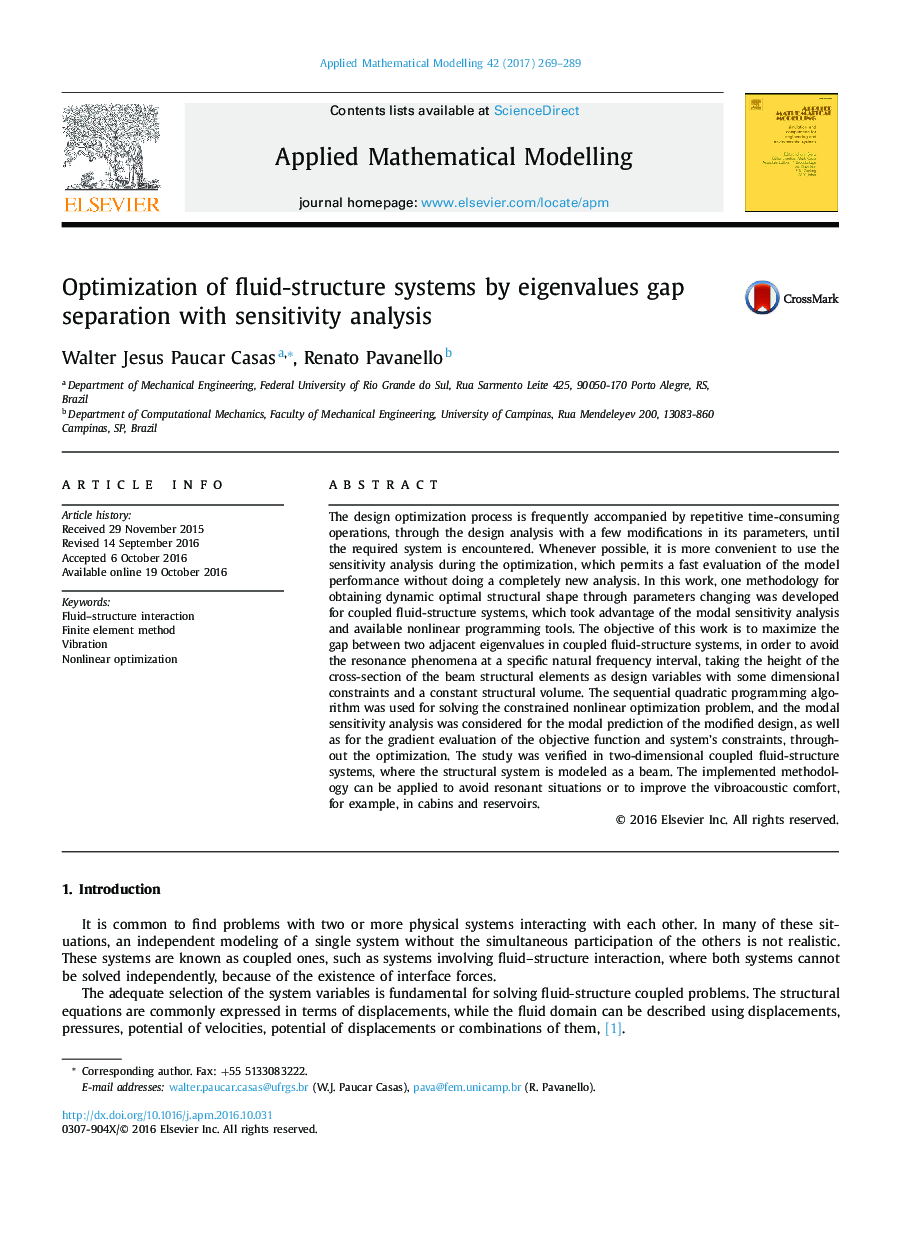| Article ID | Journal | Published Year | Pages | File Type |
|---|---|---|---|---|
| 5470878 | Applied Mathematical Modelling | 2017 | 21 Pages |
Abstract
The design optimization process is frequently accompanied by repetitive time-consuming operations, through the design analysis with a few modifications in its parameters, until the required system is encountered. Whenever possible, it is more convenient to use the sensitivity analysis during the optimization, which permits a fast evaluation of the model performance without doing a completely new analysis. In this work, one methodology for obtaining dynamic optimal structural shape through parameters changing was developed for coupled fluid-structure systems, which took advantage of the modal sensitivity analysis and available nonlinear programming tools. The objective of this work is to maximize the gap between two adjacent eigenvalues in coupled fluid-structure systems, in order to avoid the resonance phenomena at a specific natural frequency interval, taking the height of the cross-section of the beam structural elements as design variables with some dimensional constraints and a constant structural volume. The sequential quadratic programming algorithm was used for solving the constrained nonlinear optimization problem, and the modal sensitivity analysis was considered for the modal prediction of the modified design, as well as for the gradient evaluation of the objective function and system's constraints, throughout the optimization. The study was verified in two-dimensional coupled fluid-structure systems, where the structural system is modeled as a beam. The implemented methodology can be applied to avoid resonant situations or to improve the vibroacoustic comfort, for example, in cabins and reservoirs.
Related Topics
Physical Sciences and Engineering
Engineering
Computational Mechanics
Authors
Walter Jesus Paucar Casas, Renato Pavanello,
